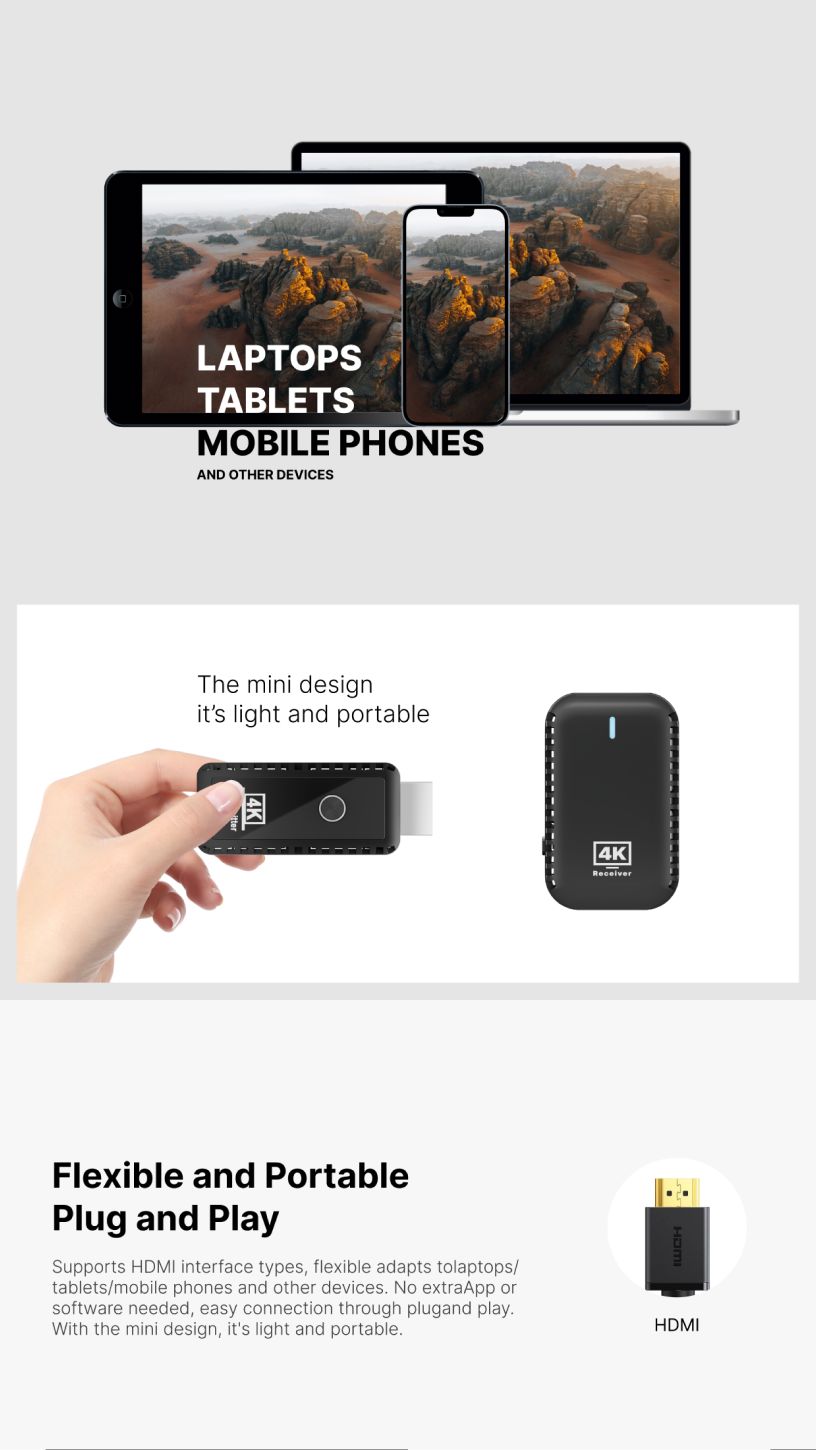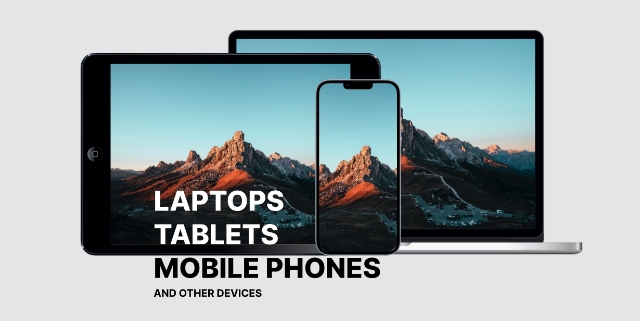Introduction: Why Understanding Wireless HDMI Extenders Matters
In today’s fast-evolving AV (audio-visual) industry, distributors and IT solution providers face growing demand for wireless video transmission. From conference rooms to digital signage, customers expect stable, high-definition, and low-latency performance—without the limitations of cables.
However, many clients often confuse wireless HDMI extenders with screen mirroring devices. While both transmit video wirelessly, their technologies, purposes, and reliability are quite different.
This article explains the key differences between a wireless HDMI extender and a screen mirror, helping you choose the right product for your business applications.
What Is a Wireless HDMI Extender?
A wireless HDMI transmitter and receiver is a professional device designed to transmit uncompressed HDMI signals (audio + video) from a source (such as a PC, camera, or media player) to a display (such as a monitor, TV, or projector) without using a physical HDMI cable.
Key Features:
- Stable, long-distance transmission (up to 50–200 meters, depending on model)
- Zero or ultra-low latency – ideal for real-time applications like gaming, live streaming, or conference presentations
- Plug-and-play setup, no need for Wi-Fi networks or apps
- Support for high resolutions, such as 1080p, 2K, or even 4K UHD
Typical Use Cases:
- Meeting rooms & conference halls
- Digital signage & control centers
- Industrial monitoring systems
- Home theater setups
long range wireless HDMI extender
wireless HDMI transmitter and receiver kit
What Is Screen Mirroring?
Screen mirroring, by contrast, is a software-based method that uses Wi-Fi or Bluetooth to project your phone, tablet, or computer screen onto a larger display. Popular technologies include Miracast, Chromecast, and AirPlay.
Key Features:
- Works through Wi-Fi networks
- Convenient for casual use, such as streaming videos or presentations
- Involves software compression, which can lead to latency or quality loss
- Often limited to consumer devices
Common Scenarios:
- Classroom or small meeting presentations
- Home entertainment (e.g., casting videos from smartphones)
- Occasional screen sharing
Wireless HDMI Extender vs Screen Mirror: A Technical Comparison
| Feature | Wireless HDMI Extender | Screen Mirroring |
|---|---|---|
| Signal Type | Uncompressed HDMI | Compressed video stream |
| Transmission Method | Point-to-point 5GHz/60GHz | Wi-Fi network based |
| Latency | Ultra-low (<100ms) | High (100–500ms) |
| Resolution | Up to 4K | Typically 1080p |
| Range | 50–200m | 5–15m |
| Interference | Minimal (dedicated channel) | Higher (Wi-Fi congestion) |
| Setup | Plug and play | Requires app/network setup |
| Target Users | Professional AV, Business | Consumer/Home |
Why Distributors and IT Integrators Prefer Wireless HDMI Extenders
For B2B clients, reliability and signal stability matter far more than convenience. A wireless HDMI extender ensures consistent, high-quality performance even in demanding environments.
Main Advantages:
- Professional stability – Designed for 24/7 operation, ideal for enterprise-grade solutions.
- No network dependency – Works independently of Wi-Fi, ensuring smoother performance.
- Easy installation – Quick plug-and-play setup reduces time and cost for integrators.
- Scalability – Multiple receivers can connect to one transmitter (depending on model).
- Compatibility – Works with most HDMI sources: cameras, laptops, Blu-ray players, etc.
When to Choose a Wireless HDMI Extender
If your clients or end users require high-resolution, real-time transmission in professional scenarios, a wireless HDMI extender is the superior choice.
- Corporate presentations with seamless video playback
- Broadcasting or live streaming where latency is critical
- Industrial or educational AV systems requiring stable, long-range signals
- Retail digital signage with multiple displays across large areas
When Screen Mirroring Is Enough
Screen mirroring may still be suitable for light, personal, or small-scale use cases. For example:
- Quick image or video sharing in meetings
- Home entertainment and casual streaming
- Environments where cost and simplicity are more important than performance
However, for most professional setups, mirroring is not reliable enough for long-distance or real-time applications.
Expert Recommendation: Pairing Technology with Purpose
As a distributor or IT solutions provider, it’s essential to match the right technology to the right scenario.
For enterprise-grade performance, go for wireless HDMI extenders with 5GHz or 60GHz frequency bands and 4K transmission support.
For home users or temporary setups, a screen mirroring device might be sufficient.
If your client needs reliability, range, and zero-lag — choose a wireless HDMI extender.
How to Choose the Right HDMI Wireless Extender for Your Business
- Transmission Range: Longer range (100–200m) is crucial for large venues, while shorter-range models are ideal for offices or classrooms.
- Resolution and Bandwidth: Support for 4K ensures future-proof compatibility with modern displays.
- Latency: Choose models with <100ms latency for real-time applications such as gaming or live broadcasting.
- Connectivity: Some models include IR passback, loop-out ports, or USB-KVM functions for extended control options.
- Brand Reliability: Partner with trusted manufacturers who provide OEM/ODM options, stable quality control, and after-sales support.
Summary: Key Takeaways
| Aspect | Wireless HDMI Extender | Screen Mirroring |
|---|---|---|
| Performance | Professional & stable | Consumer-grade |
| Latency | Near-zero | High |
| Setup | Plug-and-play | App/network-based |
| Best for | Businesses, integrators, AV solutions | Personal use, simple sharing |
If you’re looking to deliver reliable wireless transmission solutions to your customers, investing in a professional extender wireless HDMI is a smart business decision.
Ready to Expand Your AV Product Line?
At Hoomc, we specialize in wireless HDMI extenders, transmitters, and receivers for professional applications.
- 13+ years of manufacturing experience
- OEM/ODM customization available
- Long-range, low-latency performance
- Ideal for B2B distributors and AV solution providers




